Did you know that the air inside your office could be silently affecting your health and how well you work each day? As we move into 2025, office air quality monitoring is no longer just a nice-to-have but an essential part of workplace safety and performance.
This guide reveals why understanding and improving office air quality monitoring is vital for every business. You will discover the hidden health risks, learn about the latest regulations, explore innovative monitoring technologies, and follow a clear step-by-step plan for creating a safer, more productive workspace.
Ready to make your office a place where everyone can thrive? Let’s get started.
The Importance of Office Air Quality in 2025
The modern workplace is evolving, and with it, the expectations for a safe and healthy environment. Office air quality monitoring has become a crucial factor for businesses aiming to protect both employee wellbeing and productivity. As we enter 2025, understanding why indoor air quality matters is not just good practice—it is essential for compliance, staff retention, and financial sustainability.
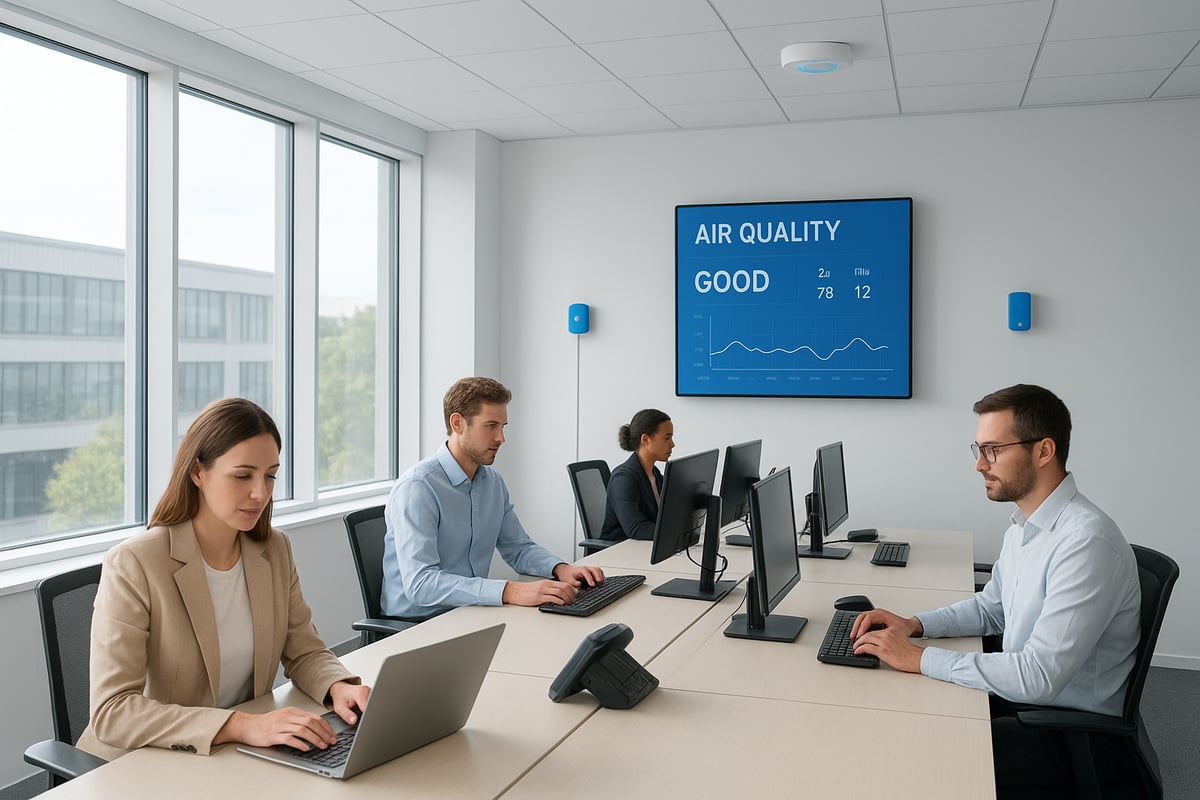
Health and Wellbeing Impacts
Poor indoor air quality affects everyone in the office, often without obvious signs. Office air quality monitoring is linked directly to health, as exposure to pollutants like dust, mould, and volatile organic compounds can lead to respiratory illnesses and allergies.
Studies show that up to 50 percent of office workers report symptoms connected to indoor pollution, such as headaches, fatigue, and eye irritation. Workspaces with inadequate ventilation experience higher rates of sick building syndrome, leading to increased absenteeism. By prioritising air quality, businesses help prevent these health issues and foster a safer workplace.
Productivity and Cognitive Performance
The impact of air quality extends beyond physical health. Office air quality monitoring reveals that elevated levels of carbon dioxide and volatile organic compounds reduce focus, slow decision making, and increase error rates.
Research demonstrates that productivity can drop by as much as 10 percent in poorly ventilated environments. Some companies have reported measurable improvements in employee output after investing in better air quality systems. By maintaining optimal conditions, businesses give staff the best chance to excel in their roles.
Legal and Regulatory Requirements
In 2025, legal compliance is a core driver for office air quality monitoring. Both UK and EU regulations require employers to ensure safe indoor environments, with specific standards for air quality and ventilation.
Employers must adhere to Health and Safety Executive (HSE) guidelines, which outline acceptable levels of pollutants and mandate regular assessments. For a comprehensive overview of evolving standards, the Air Quality Status Report 2025 is an essential resource. Staying informed helps businesses avoid penalties and demonstrates a commitment to employee protection.
Employee Expectations and Retention
Following the pandemic, employees are more aware than ever of their work environment. Office air quality monitoring is now a key factor in job satisfaction, with recent surveys showing that 70 percent of staff consider air quality when evaluating their workplace.
Companies that actively monitor and improve air quality are using this as a recruitment and retention tool. By openly communicating efforts to maintain a healthy office, employers build trust and loyalty among their teams, setting themselves apart in a competitive job market.
Financial Implications
Ignoring air quality issues comes at a significant cost. Without office air quality monitoring, businesses face increased sick days, higher healthcare expenses, and lost productivity.
Investing in air quality solutions delivers a measurable return on investment. Studies have found that organisations can save thousands of pounds each year through effective monitoring and intervention. For example, one business reported a sharp drop in absenteeism after implementing a continuous monitoring system, highlighting the financial benefits of prioritising a healthy workplace.
Key Office Air Pollutants and Their Sources
Understanding the pollutants in your office is essential for effective office air quality monitoring. Modern workplaces face a range of contaminants, many of which are invisible yet impactful. Recognising these threats is the first step to safeguarding employee health and productivity.

Common Indoor Pollutants
Several pollutants are commonly found in offices and pose significant risks. These include carbon dioxide (CO2), volatile organic compounds (VOCs), particulate matter (PM2.5 and PM10), and biological contaminants like mould spores and bacteria.
| Pollutant | Primary Health Risks | Typical Source |
|---|---|---|
| CO2 | Headaches, fatigue | Human breathing |
| VOCs | Irritation, headaches | Office equipment, cleaners |
| Particulate Matter | Respiratory issues | External air, printers |
| Biological | Allergies, illness | Damp areas, HVAC systems |
These contaminants are detected using advanced sensor technology. To learn more about how sensors identify and measure these pollutants, visit the Smart sensor technology overview.
Sources of Pollution in Offices
Pollutants originate from various sources within office environments. HVAC systems, if not maintained, can circulate dust and microbes. Office equipment like printers and copiers emit VOCs and fine particles. Cleaning chemicals, especially those with strong scents, can increase indoor pollution. Furnishings and carpets may release formaldehyde and other gases.
- HVAC systems: dust, microbes
- Printers, copiers: VOCs, particulates
- Cleaning agents: chemical vapours
- Office furnishings: off-gassing
Identifying these sources is a critical step in office air quality monitoring.
Outdoor Air Intrusion
Outdoor pollutants often find their way into offices, especially in urban areas. Traffic-related emissions, pollen, and industrial pollutants can enter through open windows, doors, or ventilation systems. Offices near busy roads or construction sites are particularly vulnerable.
For example, an office located near a main road may experience higher levels of nitrogen dioxide and fine particles. Effective office air quality monitoring helps track when and how these pollutants infiltrate indoor spaces.
Human Activity and Occupancy
People themselves contribute to changes in air quality. High occupancy levels lead to increased CO2 and humidity. Cooking in shared kitchen areas, use of personal care products, and even frequent meetings in closed rooms can elevate pollutant levels.
A common scenario is a meeting room with poor ventilation, where prolonged occupancy causes CO2 levels to rise, leading to reduced concentration and comfort. Regular office air quality monitoring can pinpoint these hotspots and inform necessary interventions.
Emerging Contaminants in 2025
New pollutants are becoming a concern for office air quality monitoring. Microplastics and nanoparticles, released from synthetic materials and electronic devices, are increasingly detected in indoor air. Residues from e-cigarettes and vaping devices can also contribute to poor air quality.
Recent studies highlight the rise of these emerging contaminants, emphasising the need for continuous innovation in office air quality monitoring. Staying informed about these trends is vital for future-proofing workplace health.
Air Quality Monitoring Technologies and Solutions
Modern office air quality monitoring has evolved into a sophisticated discipline, combining cutting-edge sensors, smart systems, and actionable analytics. As workplaces become more aware of the invisible factors affecting health and productivity, selecting the right technologies is essential for compliance, wellbeing, and operational efficiency.

Types of Air Quality Sensors
Choosing the right sensors is the foundation of effective office air quality monitoring. Key sensor types include NDIR for measuring CO2, PID for detecting VOCs, and laser-based sensors for particulate matter.
Each technology offers distinct advantages. NDIR sensors provide reliable CO2 readings, while PID sensors are sensitive to a broad range of organic compounds. Laser sensors excel at real-time particulate measurement. When combined, these sensors offer a comprehensive view of the air quality landscape within an office.
| Sensor Type | Detects | Strengths | Typical Use |
|---|---|---|---|
| NDIR | CO2 | High accuracy | Ventilation checks |
| PID | VOCs | Broad chemical range | Chemical exposure |
| Laser | Particulate matter | Real-time, fine detail | Dust monitoring |
Integrating multiple sensor types ensures robust office air quality monitoring and supports a healthier workplace.
Real-Time Monitoring Systems
Real-time systems are now a cornerstone of office air quality monitoring. Unlike periodic sampling, these platforms provide continuous data, empowering facility managers to respond swiftly to changes.
With cloud connectivity, live dashboards display instant updates on CO2, VOCs, and other pollutants. Alerts can be triggered automatically if thresholds are breached, preventing issues before they escalate. This proactive approach reduces risk and supports compliance.
Many offices have reported that real-time monitoring leads to faster interventions and consistent air quality improvements. As a result, office air quality monitoring is increasingly seen as a critical operational tool.
Data Analytics and Reporting
Sophisticated analytics platforms are transforming office air quality monitoring from reactive to predictive. AI algorithms analyse sensor data, identifying trends and forecasting potential problems.
Automated reports help organisations meet regulatory requirements and track the effectiveness of interventions. For example, regular summaries can highlight recurring hotspots or times of day when air quality dips.
By making data accessible and actionable, analytics platforms ensure that office air quality monitoring delivers ongoing value. Facility managers can use these insights to prioritise maintenance and optimise building operations.
Integration with Building Management Systems
Seamless integration with building management systems is a significant advancement in office air quality monitoring. Sensors now connect directly with HVAC controls, enabling automatic adjustments based on real-time air quality data.
For instance, if CO2 levels rise in a meeting room, ventilation can increase automatically. This not only improves comfort but also reduces energy waste by targeting interventions where they are needed most.
Smart integration ensures that office air quality monitoring is not an isolated function but a core part of modern building operations. This approach supports both compliance and sustainability goals.
Privacy and Data Security Considerations
As office air quality monitoring becomes more sophisticated, privacy and data security are vital concerns. Employees may worry about how their data is collected and used.
Best practices include anonymising data, limiting access to authorised personnel, and complying with data protection regulations. Secure cloud storage and encrypted transmission are essential for safeguarding sensitive information.
Open communication with staff about office air quality monitoring protocols can help build trust and ensure a transparent approach. Addressing privacy proactively supports a positive workplace culture.
Vape Guardian: Advanced Air Quality and Vape Detection Solutions
Vape Guardian provides innovative solutions for office air quality monitoring, combining multi-functional sensors that detect vape, THC, and standard air quality metrics. Their technology offers real-time alerts, AI-powered analytics, and UK-based support.
Offices utilising Vape Guardian have seen measurable reductions in incidents and improved compliance with air quality standards. For those seeking a comprehensive, future-proof solution, Office air quality solutions from Vape Guardian deliver proven results.
By integrating vape detection with broader office air quality monitoring, businesses can protect employee health and maintain a safe, productive environment.
Step-by-Step Guide to Implementing Office Air Quality Monitoring
Creating a healthier workplace starts with a systematic approach to office air quality monitoring. Follow this step-by-step guide to ensure your office environment meets the highest standards for safety, compliance, and productivity.
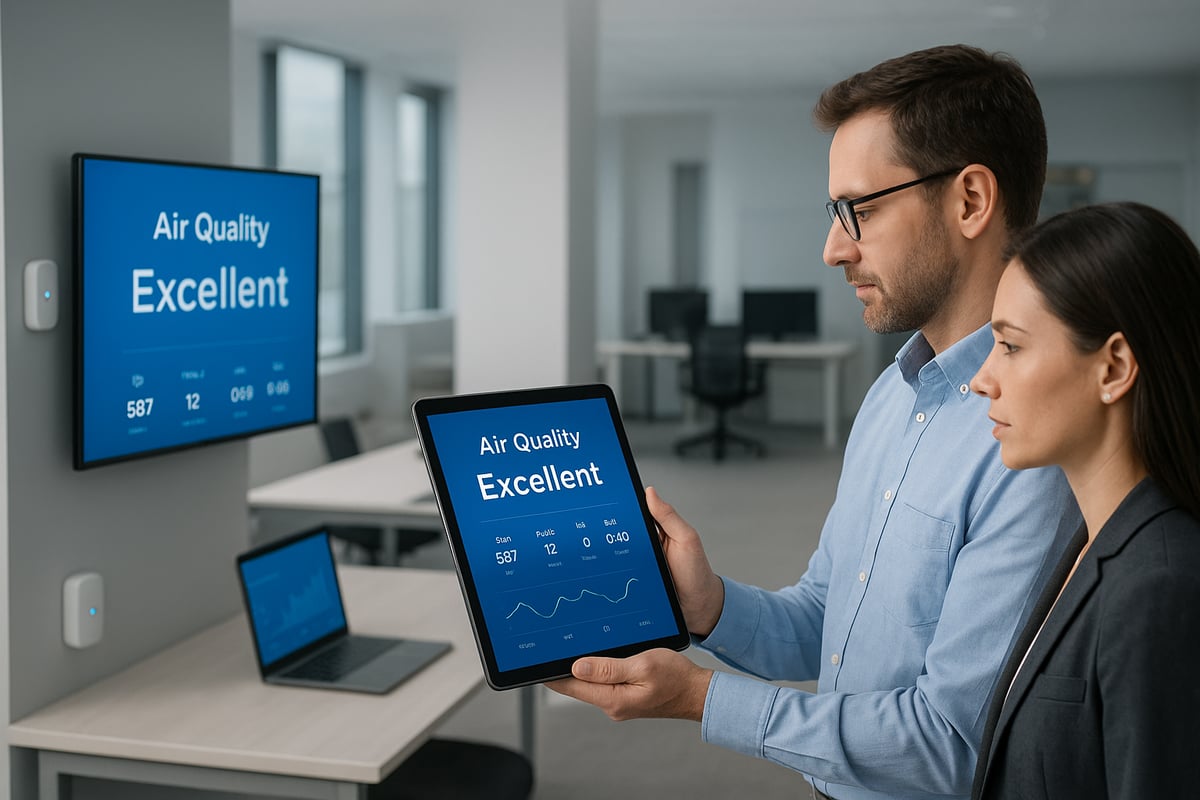
Assessing Current Air Quality
Begin your office air quality monitoring journey with a thorough assessment of your existing environment. Use portable monitors to measure CO2, VOCs, and particulates in various locations. Alternatively, professional services can conduct a more detailed audit.
Identify problem areas by conducting spot checks in meeting rooms, near printers, and in communal spaces. Record readings at different times of day, especially during peak occupancy. This data forms the baseline for future improvements.
Look for signs such as stuffiness, odours, or frequent complaints about headaches and fatigue. These may indicate specific air quality issues. Early detection is key to effective office air quality monitoring and targeted interventions.
Setting Objectives and Compliance Goals
Once you have baseline data, define clear objectives for your office air quality monitoring programme. Align your goals with legal requirements, such as UK HSE guidelines and the latest EU directives. Consider referencing resources like Indoor Air Quality Compliance in 2025 to understand current standards.
Typical objectives include setting CO2 thresholds, reducing VOC exposure, and improving ventilation rates. Establish response protocols for when readings exceed set limits. Ensure your targets are realistic, measurable, and tailored to your business needs.
Regularly review and update your objectives to reflect changes in regulations, occupancy, or building use. This proactive approach keeps your office air quality monitoring strategy effective and compliant.
Selecting the Right Monitoring Solutions
Selecting suitable technology is essential for accurate office air quality monitoring. Consider sensor types, measurement accuracy, connectivity, and maintenance requirements.
For most offices, a mix of fixed and portable sensors offers flexibility. Look for devices that measure CO2, VOCs, particulates, and humidity. Opt for solutions with user friendly interfaces and automated data collection.
Scalability is also important. Choose systems that can expand as your needs grow or as regulations evolve. Compare features and explore case studies for real world insights into successful implementation.
Installation and Integration
Proper installation is crucial for reliable office air quality monitoring. Place sensors in locations where air quality may fluctuate, such as meeting rooms, kitchens, and near HVAC outlets.
Avoid placing sensors in dead zones or directly next to vents, as this can skew readings. Integrate your monitoring systems with existing building management platforms for seamless operation.
Test all connections and ensure data flows correctly to your central dashboard. Regularly check sensor status to avoid gaps in monitoring coverage and ensure consistent office air quality monitoring results.
Staff Training and Communication
Effective office air quality monitoring involves your entire team. Educate staff about the purpose of monitoring and the benefits it brings to workplace health and productivity.
Hold training sessions to explain how data is collected, what actions may be taken, and how employees can contribute to maintaining good air quality. Transparency is vital for building trust and engagement.
Encourage staff to report issues, participate in solution finding, and adopt habits that support a healthy office environment. Clear communication ensures everyone understands the value of office air quality monitoring.
Ongoing Maintenance and Calibration
Maintaining your office air quality monitoring system is essential for accurate and reliable data. Schedule regular calibration of sensors according to manufacturer recommendations.
Plan quarterly maintenance checks to inspect hardware, update software, and verify connectivity. Remote diagnostics can streamline troubleshooting and prevent downtime.
Document all maintenance activities and keep a log of sensor performance. Consistent upkeep ensures your office air quality monitoring system continues to deliver trustworthy results over time.
Interpreting Data and Taking Action
The final step in office air quality monitoring is interpreting the collected data and implementing improvements. Use dashboards and automated reports to identify patterns, spikes, or recurring issues.
Take action by adjusting ventilation, upgrading filters, or changing cleaning products as needed. For practical examples of successful interventions, consult resources like Air quality case studies to see how other businesses have benefited.
Regularly review outcomes and refine your strategies based on real world feedback. By closing the loop, you ensure your office air quality monitoring delivers ongoing value for both employees and the business.
Future Trends in Office Air Quality Monitoring
The landscape of office air quality monitoring is evolving rapidly as new technologies and workplace expectations shape the future. Businesses are increasingly looking for smarter, more integrated solutions to create healthier and more productive environments. Understanding these future trends is essential for staying compliant, competitive, and prepared for the challenges ahead.
Smart Building Integration and IoT
Smart building integration is set to redefine office air quality monitoring. In 2025, interconnected sensors are becoming standard, feeding real-time data into centralised building management systems. These sensors communicate with HVAC controls, enabling automated adjustments to ventilation and filtration based on occupancy and pollutant levels.
This seamless connectivity boosts response times and ensures that air quality remains within safe thresholds. Facility managers benefit from unified dashboards, which streamline monitoring and reduce manual intervention. As IoT adoption grows, offices are moving towards fully automated, self-regulating environments that continuously optimise indoor air for health and efficiency.
Advanced Analytics and Predictive Maintenance
The rise of artificial intelligence is transforming office air quality monitoring. Analytics platforms now aggregate and analyse vast streams of sensor data, identifying trends and predicting potential air quality issues before they escalate. This proactive approach minimises downtime and supports timely maintenance.
For example, predictive alerts can notify staff when filters require replacement or when occupancy patterns indicate a risk of elevated CO2. By leveraging big data, organisations can anticipate problems and make informed decisions that protect both employee wellbeing and operational efficiency. The result is a more resilient and future-ready workplace.
Focus on Health and Wellness Certification
Health and wellness certifications are gaining traction as businesses prioritise employee wellbeing. Programmes like WELL and RESET set rigorous benchmarks for air quality, ventilation, and overall building health. Achieving these certifications demonstrates a commitment to creating safe and comfortable workspaces.
Office air quality monitoring plays a central role in meeting these standards, providing reliable data to document compliance and support ongoing improvement. Many organisations are pursuing certification not only for health benefits but also for competitive advantage in attracting and retaining talent. As expectations rise, third-party validation is becoming a key differentiator.
Addressing New Workplace Challenges
Workplaces are evolving, with hybrid work models, flexible layouts, and higher occupancy turnover introducing fresh challenges. Office air quality monitoring must adapt to these changes, offering flexible solutions that can be tailored to varied environments.
For instance, monitoring systems now support hot-desking and shared spaces by tracking air quality in real time across different zones. This adaptability ensures that every area, from meeting rooms to communal lounges, maintains optimal air quality, regardless of fluctuating occupancy. Businesses that embrace these innovations can better support productivity and comfort for all employees.
Evolving Regulations and Best Practices
Regulatory standards for office air quality monitoring are becoming more stringent across the UK and EU. Employers must stay informed about the latest requirements to ensure compliance and avoid penalties. The UK Air Quality Regulations 2024 set out clear expectations for indoor environments, emphasising the importance of continuous monitoring and robust reporting.
Similarly, the revised EU Air Quality Directive 2024/2881 introduces updated benchmarks for offices, focusing on transparency and public accountability. Staying ahead of these changes is vital for all organisations seeking to maintain safe and compliant workplaces.
Innovations in Air Purification and Filtration
Technological advances in air purification and filtration are complementing office air quality monitoring. Modern solutions include UV-C light, HEPA filters, and electrostatic precipitators, all of which can be integrated with monitoring systems for maximum effectiveness.
These innovations not only remove a broader range of contaminants but also enable real-time adjustments based on sensor feedback. As purification technologies continue to evolve, businesses can expect even greater protection against emerging pollutants and a healthier working environment for years to come.
After exploring the crucial links between office air quality, employee wellbeing, and business performance, it’s clear that proactive monitoring is more important than ever in 2025. Whether you’re aiming to meet new compliance standards, boost productivity, or create a safer, more welcoming workplace, having the right technology makes all the difference. If you’re ready to take the next step and want tailored advice for your building, we’re here to support you.
Talk to our team and protect your building today
and discover how easy it can be to safeguard your office environment for everyone.


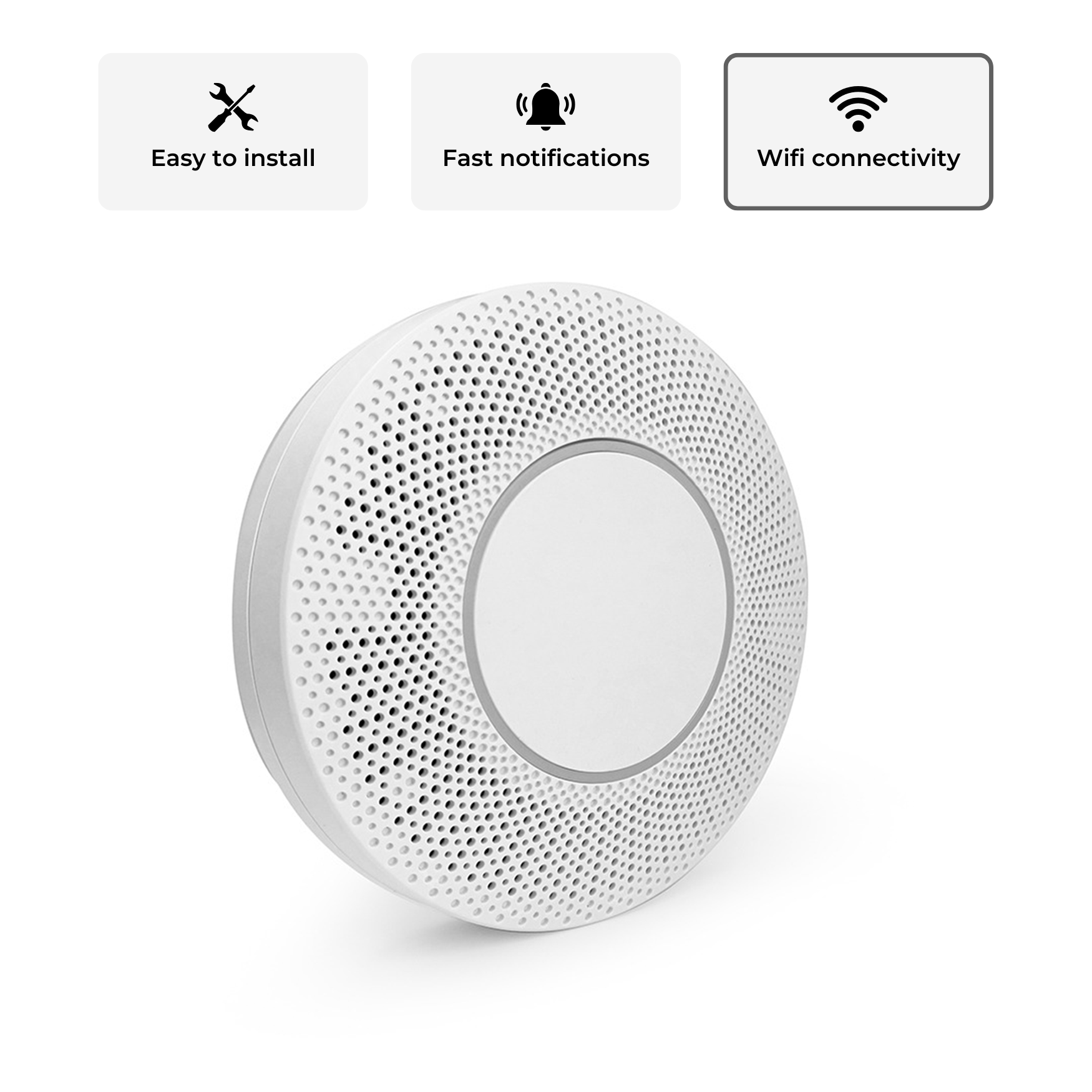
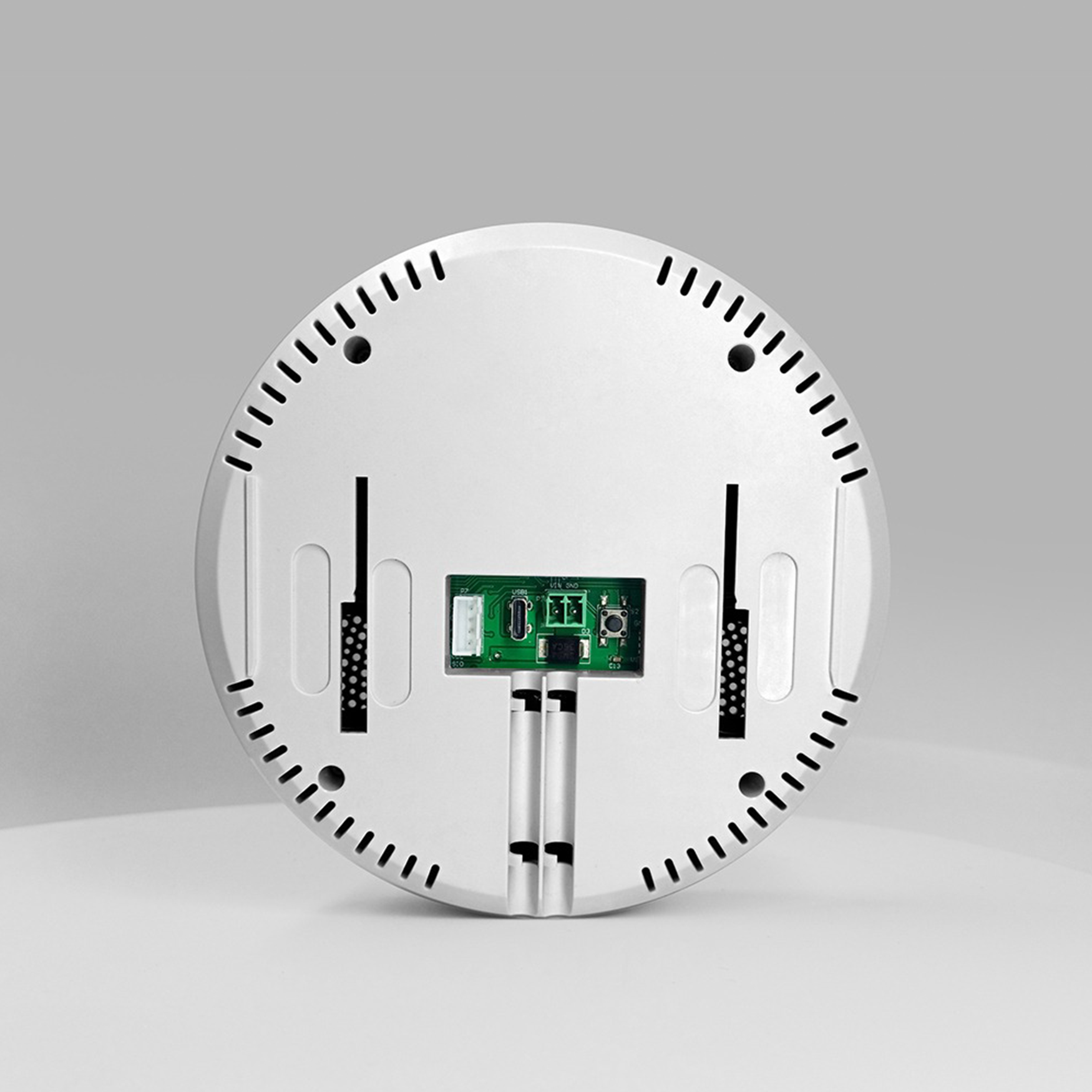

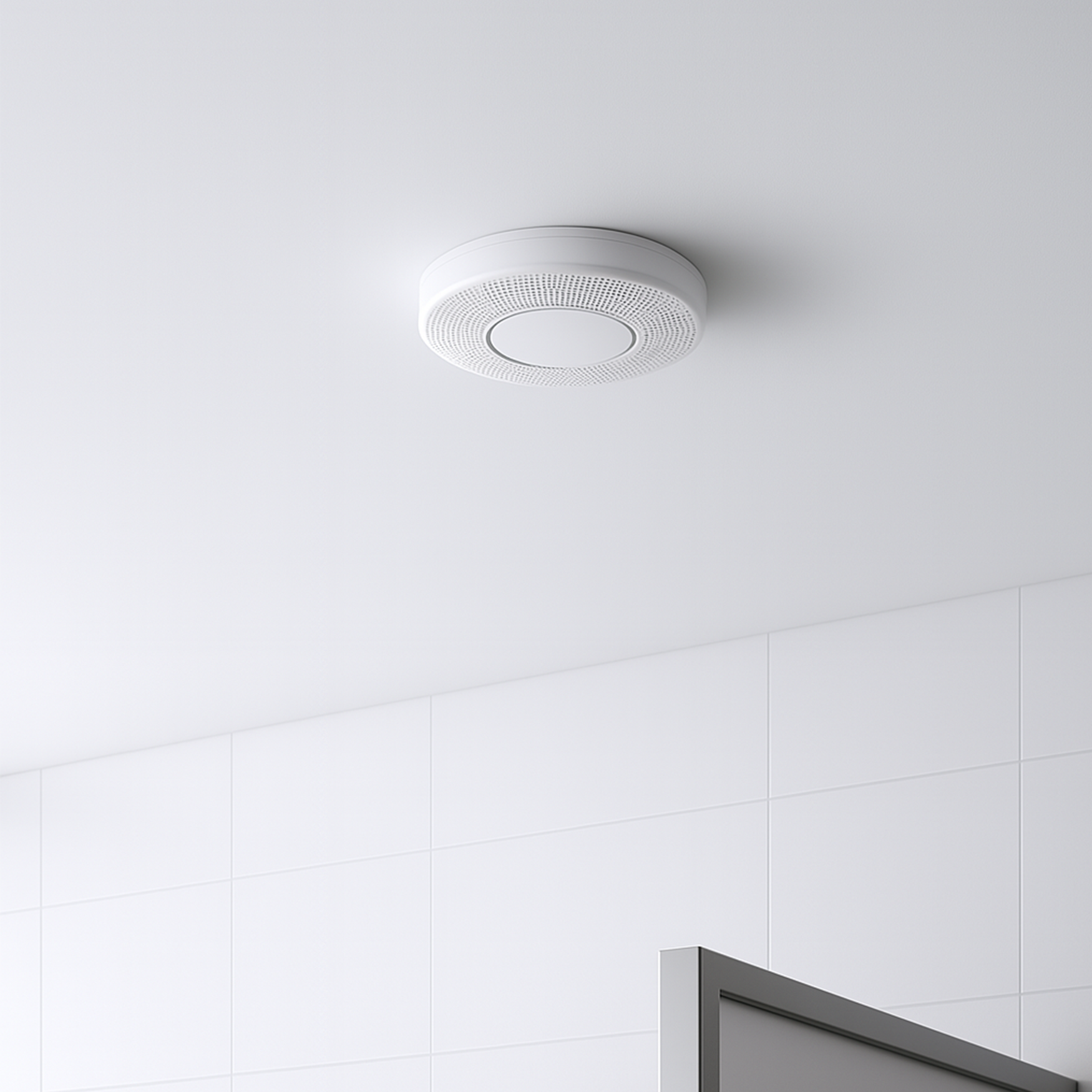
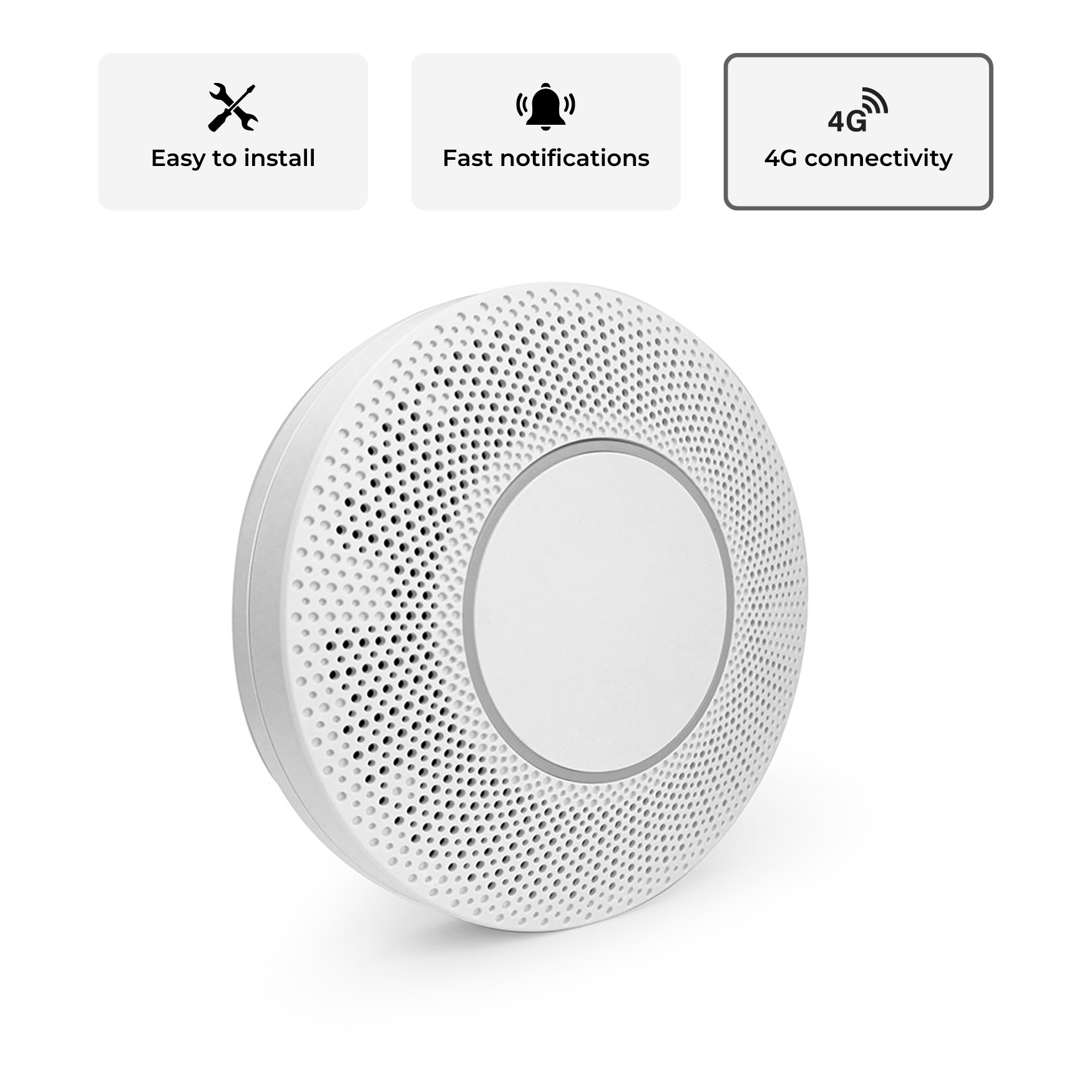
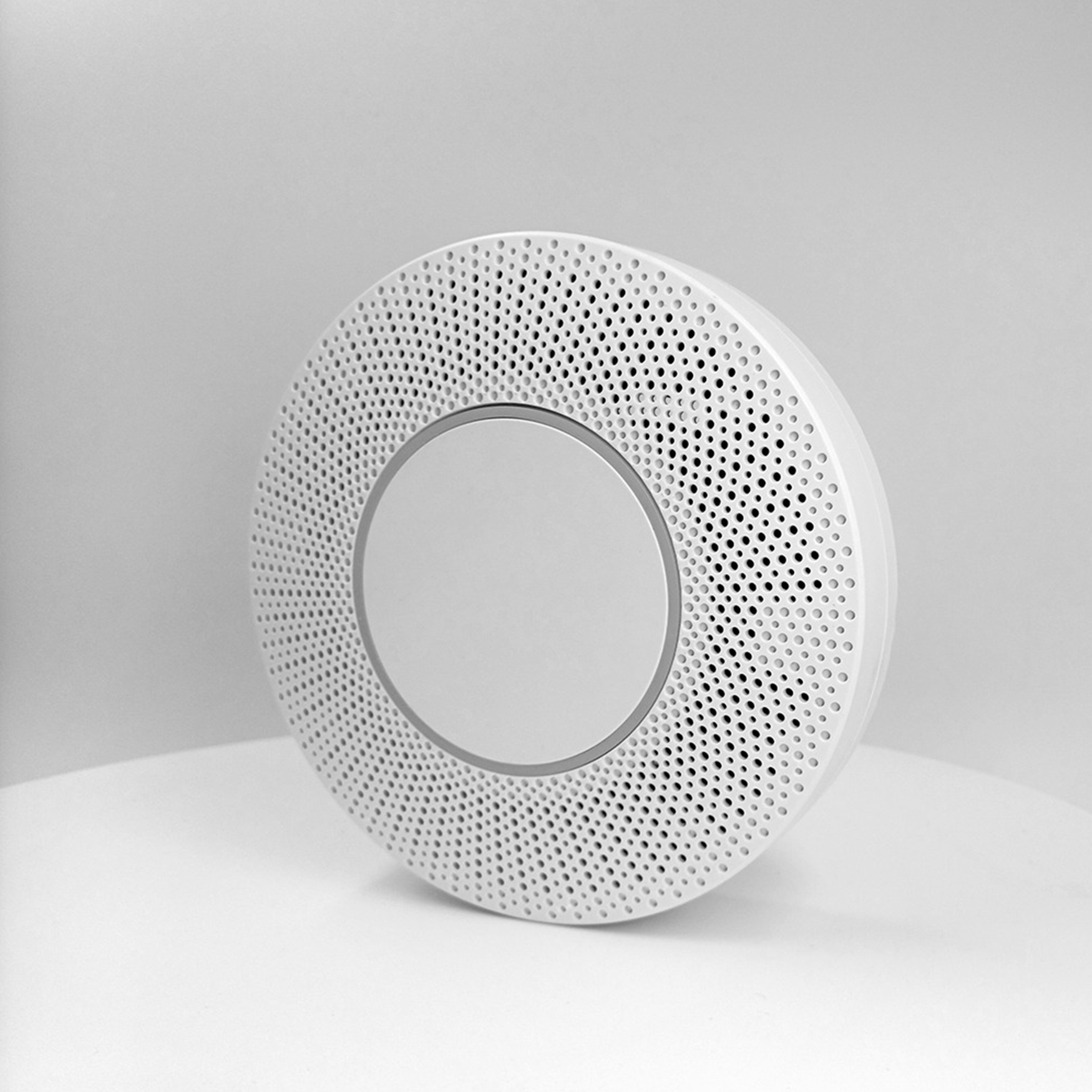
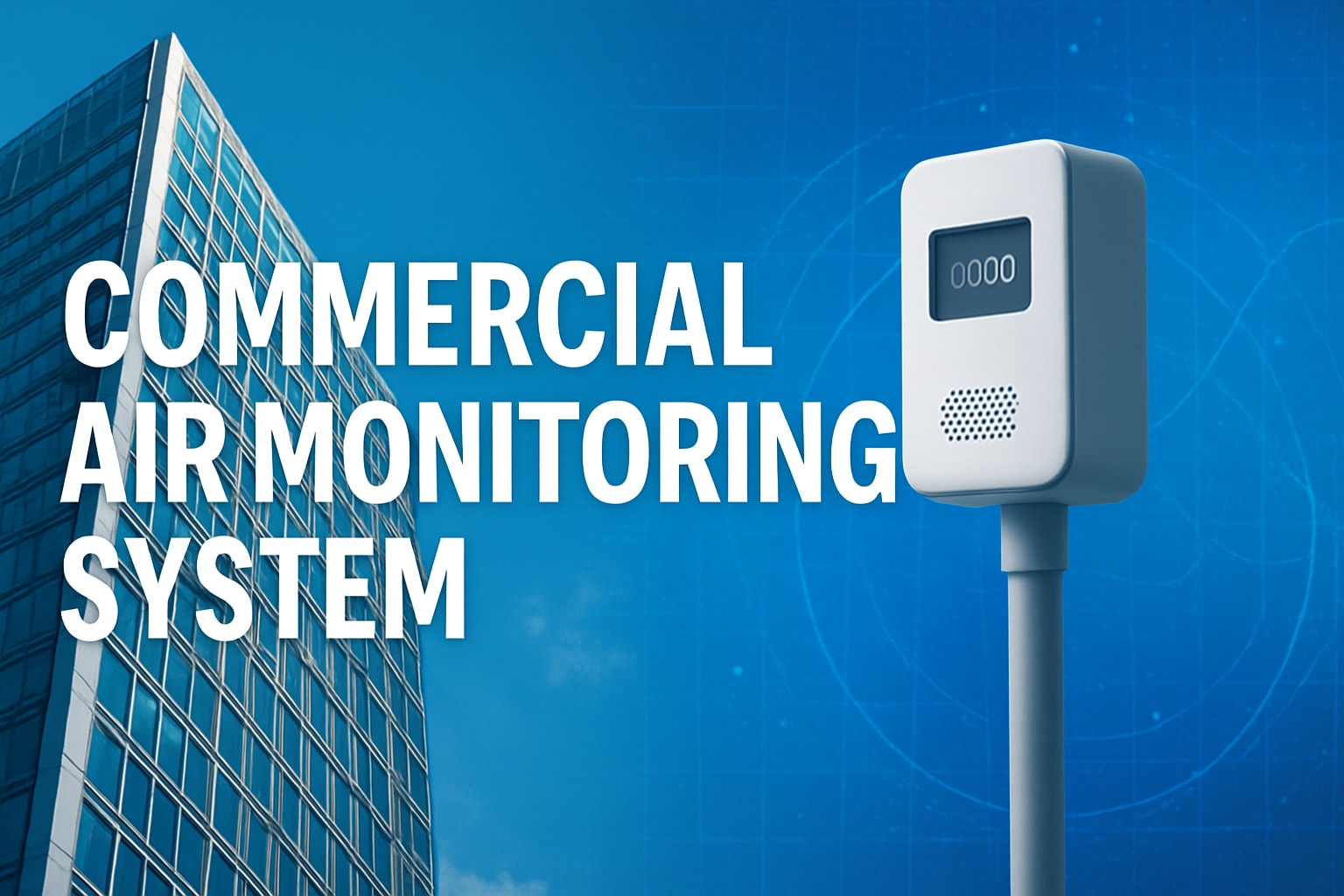


Share:
Step-by-Step Guide to Detect Vaping in Toilets (2025)
The Essential Smoking Sensor Guide for 2025